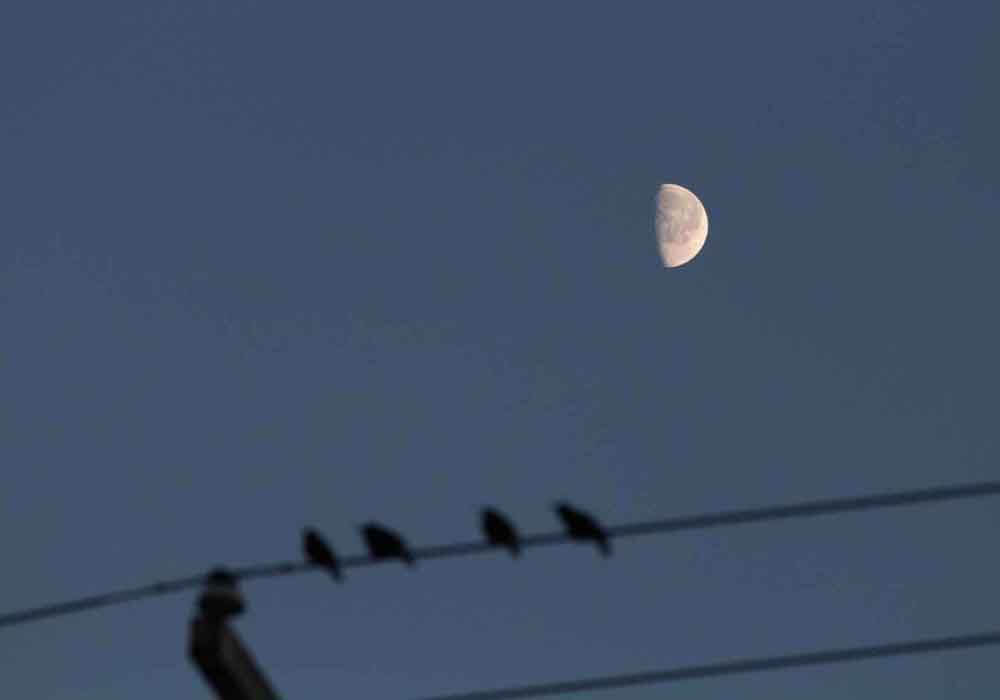Bird Senses
How Do They Experience The World?
bird senses
At one point or another, we’ve all wondered how animals see the world, particularly birds. What do they see and hear? How do they experience the world?
Birds have the same senses as humans, but they experience them in vastly different ways. Some of their senses, like hearing and feeling, are more acute. Others like taste are more subdued. Their senses are dedicated to keeping them fed and safe from predators.
This article will explore the colorful array of bird senses to find out how they work and if they are all that different from us and other terrestrial creatures.

How Do Birds Sense Things?
Birds are sensitive creatures in every sense of the word, literally. They’re always on high alert, looking out for the next meal or predators looking to make them into a meal. Bird senses are hard-wired for survival.
Birds sense things by using sight, smell, taste, hearing, and feel. Birds dedicate their lives to finding food and evading predators, and their senses are perfectly suited to this lifestyle.
This means that some of their senses are heightened or focused compared to ours. For instance, their hearing is much more acute within a particular range, specifically, one to four kilohertz.
Species like kiwi and ibises can sense movement and vibrations through soil and water, even from several inches away, through densely-packed nerves in their beaks. This gives them an upper hand when hunting for moving prey like forms and fish.
Some see this “remote touch” as a sixth sense of sorts and combines with their sharp hearing to warn them of incoming predators or potential threats.
Many bird species also have a surprisingly diverse range of taste buds which let them know food is nutritious or warn them that food contains toxins or has gone bad.
How Many Senses Do Birds Have?
Most birds may be a fraction of the size of humans, but don’t underestimate how much stimuli their bodies constantly process.
Birds have five senses, just like humans. In fact, some of their senses are even sharper than ours. They can sense vibrations inches away and see infrared and ultraviolet light. They also have a keener ear for tone and rhythm.
Birds explore the world using:
- Sight
- Smell
- Sound
- Touch
- Taste
Bird Sense Of Sight
One sense that birds have that’s far superior to ours is sight. Birds have more light receptor cells than humans. Some birds can even see ultraviolet light, helping them identify suitable mates.
This table illustrates just how good a bird’s eyesight is in relation to other species.
|
Species |
Photoreceptors per Sq. Millimeter |
|
Bird |
Over 400,000 |
|
Human |
200,000 |
|
Dogs |
120,000 |
|
Cats |
463,000 |
Though the average bird has around 400,000 photoreceptors per square millimeter, birds of prey like buzzards have closer to 1000,000. That’s eight times the visual ability of a human!
The “lens” that birds see through is also quite fascinating. Birds of prey have forward-set eyes, so they can see exceptionally well but in a reasonably narrow range compared to “prey” birds.
Birds like pigeons and ducks have eyes on the side of their heads, allowing them a much wider peripheral view of the world. In fact, pigeons can see 320 degrees without even turning their heads.
Birds of prey have binocular vision, allowing them to focus on prey and go in for the kill, whereas smaller and more docile birds have less acute vision but a much broader scope to see and avoid predators.
Watch the below video for a more detailed look at the anatomy of a bird’s eye and how they use their fantastic visual abilities to their advantage.
Bird Sense Of Smell
Smell is the least-researched of all bird senses, and it was previously thought that birds couldn’t smell at the capacity of most other creatures.
Upon further research, scientists have found that some birds have extraordinary olfactory bulbs that give them a natural advantage over their competitors.
Birds use their sense of smell to forage, find prey, and detect when something’s off in their environment. Scientists have used turkey vultures to pinpoint gas leaks, and kiwis use their sharp noses to sniff out live prey in fallen leaves and foliage.
A study by Kenneth Stager in 1960 showed that turkey vultures could tell how old a carcass was, showing a massive preference for carrion fresher than four days old.
The birds with the best sense of smell are:
- Turkey vultures
- Brown kiwis
- Albatrosses
- Petrels
- Pigeons
Pigeons may be an unexpected contender on this list, but it’s been discovered that pigeons can create a smell map of their surroundings, even using it to direct themselves and find their destinations.
The same is known for seabirds like albatrosses and petrels, birds that need to utilize all their senses to navigate thousands of miles of open ocean and find food to fuel their journey.
How else would they find food in vast expanses of ocean, with little to no visual of what’s beneath the surface? The only way this is possible is through millennia of evolution, creating creatures perfectly adapted to their environment.

When it comes to a birds sense of smell, we felt it deserved greater coverage, so we wrote this fascinating article titled Can Birds Smell Things? Be sure to check it out.
Bird Sense Of Sound
Birds may not have visible ears, but don’t underestimate their hearing. Their keen auditory perception helps them to evade predators and navigate their habitat.
Birds have feathers called auriculars that extend back from their eyes, protect their funnel-like outer ear, and block out fierce winds during flight.
The bird’s head plays a significant role in their hearing. A bird’s skull contains disks that can absorb or reflect sound. Owls, for instance, can flex their facial muscles to alter the position of these disks at will.
On average, birds can hear sounds within the 1000 to 4000 Hz range. Technically, humans can hear a broader range of frequencies, but birds are more sensitive to rhythm and tone, making it easy for them to focus on specific sounds in a noisy environment.
Hearing is vital in finding a mate and raising chicks. Birds send out mating calls to signal to eligible mates that they’re eager to pair, and birds use unique chirps and screeches to communicate with their mates and chicks.
Parents and chicks can communicate over long distances, which is handy when the chicks enter flight school and end up on the ground or in a tree far from their nest.
The more bird parents talk to their chicks, the more “language abilities” they develop. Like humans, birds aren’t born with an innate knowledge of how to “speak,” so sound input is crucial for young, growing birds.
Bird Sense Of Touch
Birds have incredibly acute touch and vibration sensors in numerous places on their bodies.
- Bills
- Tongues
- Feet
- Some feathers
For instance, waders use extremely sensitive beaks to search and probe for prey. Smaller birds, like woodpeckers, have a concentration of these in their legs and feet to detect the movement of nearby predators.
These vibrational sensors, known as Herbst corpsicles, are believed to be present in birds for as long as 70 million years, dating back to their dinosaur ancestors.
Contrary to what you may think, birds’ feathers have no nerve endings, so they can’t feel with them. They were previously thought to be unable to tell when they’ve got missing or damaged feathers.
Scientists believe a type of feather called the filoplume may serve a unique purpose that does, in fact, allow them to assess damaged or missing feathers and replace them selectively.
This leads to the question of how birds feel cold if not with their feathers. As we know, feathers act as protective barriers against cold and moisture and are mechanisms of flight (minus the flightless birds, of course).
Birds feel cold in their feet, and their bodies regulate how much heat is sent to the extremities to ensure they stay warm but don’t lose too much energy. Clearly, they’re much better adapted to handling cold sensations than humans.
Bird Sense Of Taste
Birds can pick up the four major taste groups:
- Sweet
- Salty
- Bitter
- Sour
- Spicy
Like humans, birds evolved the ability to taste as a way to determine whether food was safe and nutritious to eat or not. Humans have a more complex sense of taste, and birds process tastes very different from us.
Firstly, birds don’t have taste buds on their tongues. Birds use their tongues mainly for preening and pushing food down their throats. Instead, their taste buds are located:
- On the base of their tongues.
- On the roof of their mouths.
- On the floor of their mouths.
- Sometimes, inside their bills.
The location of a bird’s taste buds and the amount of taste buds they have depends on the breed of the bird.
|
Bird Breed |
Number Of Taste Buds |
|
Parrots |
Over 300 |
|
Pigeons |
Around 30 to 40 |
|
Chickens |
24 |
|
Ducks |
300 to 400 |
|
Geese |
300 to 400 |
|
Crows |
100 |
|
Songbirds |
About 50 |
One species of bird that can’t taste is the ostrich. They also don’t need them, considering they immediately throw all their food to the back of their throats.
However, their super-sensitive bills compensate for their lack of taste by allowing them to touch and inspect objects. Learn more about ostriches and their bizarre mouths at EarthTouch.
Birds ultimately don’t need as many taste buds as humans because they have a limited diet. They’re more concerned with what they can digest rather than how things taste.
Their sense of taste is also somewhat subdued.
- Spicy: Birds can taste spicy things but don’t process the heat.
- Sweet: Most birds don’t require this taste, and nectar-eating birds have it much stronger than other birds.
- Sour: Birds can tell when something is sour or acidic, but they’re more resistant to sourness than humans.
- Salty: Most birds have a high sensitivity to salt and will often reject food or water with high salt content.
- Bitter: Most birds are acute at detecting bitterness because most natural toxins give off a bitter taste, so they need to know which toxic foods to avoid. Sensitivity to this favor differs across species.

It seems apparent that birds can sense danger considering that they always seem to be flying away from something. Yet, how is sensing danger possible? Check out our article How Do Birds Sense Danger? to find out.
Do Birds Have Senses Humans Don’t?
In ordinary circumstances, humans have overall better senses than birds. However, they have a few tricks up their sleeve that thrust them upwards regarding natural senses and abilities.
Birds employ innate survival tactics that humans can only achieve with man-made technology modeled after the avian experience, and these abilities are fascinating.
Magnetic Sense
Many have wondered how birds migrate each year and know exactly where to go or how they fly in perfect formation and change direction seamlessly. The answer is that birds can see the Earth’s magnetic fields.
Birds’ eyes contain a molecule called cryptochrome 4, allowing them to see magnetic fields. This internal compass is thought to be heavily linked to the birds’ eyesight.
This extraordinary ability is known as magnetoreception and is most commonly studied in migratory bird species, though all birds possess this ability.
Ultraviolet Vision
Birds’ eyes have unique photoreceptors and a larger number of color cones that allow them to perceive UV rays naturally, an ability humans can only achieve with high-tech cameras.
Whereas humans have trichromatic color vision and can see in three primary colors, birds have tetrachromatic vision, allowing them to view the world in four colors - the three primary colors and ultraviolet.
They use this vision to help them forage for the right food and even identify the most suitable mate. Birds like the Blue Tit are unassuming to the naked eye, but to females of the species, they glow with iridescent UV colors.
A bright UV “glow” is a sign of a healthy bird, indicating to females that this male is a suitable mate.
The video below shows various bird species in regular and UV footage to illustrate how birds see the world differently and even themselves.
This may not seem like such a huge advantage, but it’s a significant aid to birds searching for food amongst vegetation.
Echolocation
A select few nocturnal birds find their way around in total darkness using echolocation.
Bats use short-wavelength echolocation to find small prey like insects, but birds use long-wavelength sounds to detect larger objects, such as rocks and trees. These longer wavelengths are even audible to human ears.
The waves bounce back at the birds and give them information about the exact location and size of an object, which helps them avoid collisions with their environment by building a 3D map of their surroundings.
So far, we only know of two bird species that make use of echolocation
- Oilbirds
- Swiftlets
Bird Senses...Final Thoughts
Birds can smell, hear, taste. feel, and see, albeit in vastly different ways than humans and other living creatures can.
Though some of their senses aren’t as keen as ours, they’re born with secret senses and abilities we can only hope to recreate through technology. Scientists are steadily investing more time in investigating these abilities, but they remain pretty mysterious for now.
Back To The TOP Of This Bird Senses Page

About the Author...
Richard Worden, a dedicated bird lover for over 20 years, I love to share my in-depth knowledge and passion for birds. Read more About Me and my expertise in this field.
- We Know Birds HOME ›
- Bird Senses and How They Use Them ›
- Bird Senses



